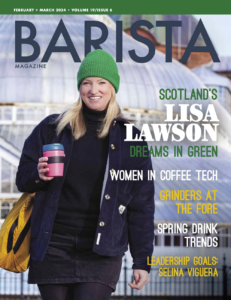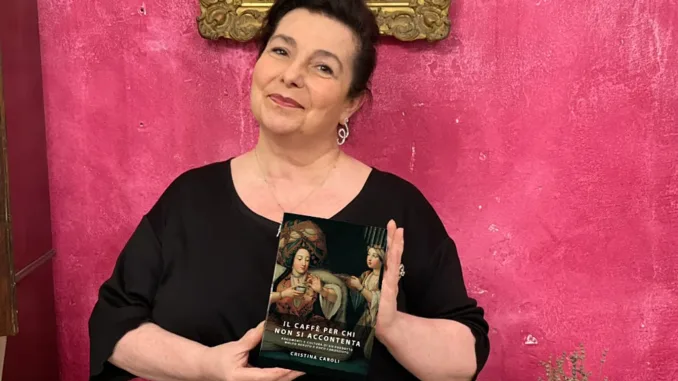
Il Caffè Per Chi Non Si Accontenta (Coffee For Those Who Are Not Satisfied) is a book by Cristina Caroli, a well-known figure in the Italian and international coffee community. Written with a multidisciplinary approach, this collection offers insights on various coffee topics.
BY TANYA NANETTI
SENIOR ONLINE CORRESPONDENT
Photos courtesy of Cristina Caroli
I’ve read many interesting books on coffee in recent months, and one of the most enjoyable has been Cristina Caroli’s Il Caffè Per Chi Non Si Accontenta (Coffee For Those Who Are Not Satisfied). First printed in April 2023, the book is, for now, available only in Italian.
Cristina is well-known in the Italian and international coffee community as co-owner, together with her husband Alessandro Galtieri, of the coffee shop Aroma in Bologna, Italy.
Coffee completely changed Cristina’s life in the last two decades; she went from being a simple “consumer“ to a coffee expert. Realizing that this change is possible, Cristina decided to write her first book, which uses a multidisciplinary approach, covering history, anthropology, health, taste physiology, and more.
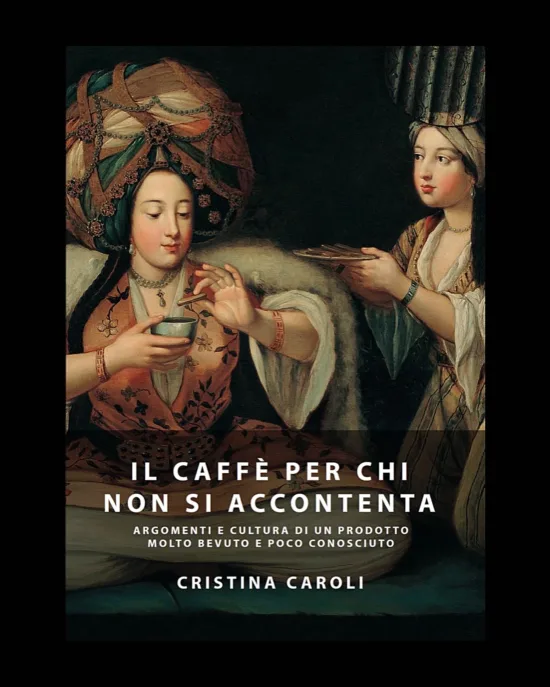
Early History
The first chapters of the book deal broadly with the history of coffee, mixing historical notes with myths and legends. There are classic stories related to the first coffee crops in Yemen and the subsequent spread of coffee through various powerful empires. After a brief history of the Canephora species, we learn about the importance of the Catholic church and its missionaries in spreading coffee plants around the world, reaching lands such as Hawai’i and the Philippines.
At this point, it is time to delve into how coffee entered Europe, in slightly different ways in each country, and how this still affects the way coffee is consumed in that specific country. For example, did you know that when coffee arrived in Italy, the Catholic church initially tried to ban it by declaring that coffee was a drink of Satan? To avoid this ban, Pope Clement VIII decided to baptize the drink so that everyone could drink it “guilt-free.“
Centrality of Coffee Shops
Cristina then analyzes the important role that coffee shops (and coffee itself) have played since the opening of the first European cafés. Apart from being “safe spaces“ to talk politics and cradles of revolutions (as happened in France on the eve of the French Revolution), these were also the first spaces where women could freely meet other women outside the home.
And how can we not mention the English coffeehouses that, in addition to hosting the so-called “penny universities,“ saw the publication and distribution of the first newspapers?
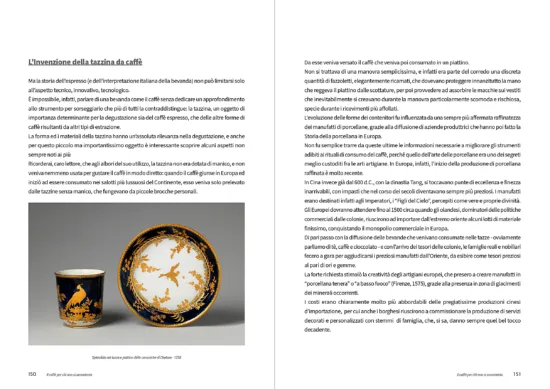
Coffee’s Impact
Shifting focus, the fifth chapter analyzes the socioeconomic impact of coffee. Here Cristina begins by showing examples of coffee’s representation in paintings, literature, and music. Then she moves on to the more “serious“ influence coffee had on revolutionary ideas and inventions, such as the Cinématographe, first presented by the Lumière brothers in the Parisian Grand Café. And speaking of great inventions, she briefly (but effectively) touches on the history of the espresso machine.
Coffee and Science
After another interesting change of topic, it is time to look at the relationship between coffee and science in both the past and present, highlighting how much has changed over the centuries of coffee consumption.
A comprehensive explanation of the chemical effect of caffeine and antioxidants, and the relationship between coffee and health, is preceded by an entertaining chapter in which Cristina shares some of the old theories about the effect of coffee on the human body. For example, traditional descriptions of coffee’s effects included—aside from the classic “it can help digestion“ and “it helps fight anxiety“—warnings against consuming too much coffee, which apparently could cause not only the loss of sexual appetite but, according to some old documents, also a general weakening that could go as far as total body paralysis!
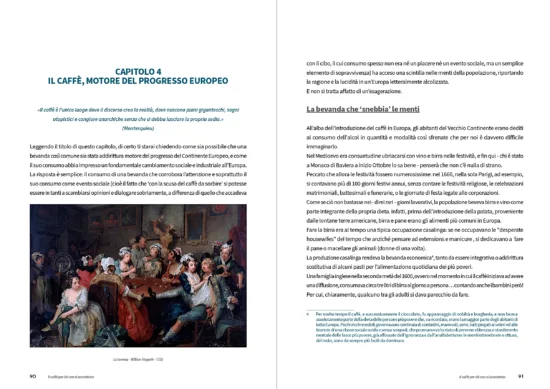
A Satisfying Finish
At this point, Cristina chooses to end the book by covering some more “traditional“ topics, moving from the fundamentals of the coffee business (and what to expect from its future) to how to recognize a specialty coffee and how to taste it properly (with an interesting chapter that digs deep into the neuro-scientific aspects of coffee tasting), but she continues to do so in her own original way, mixing science and technology with her personal point of view, as well as historical quotes with interesting observations.
All in all, ll Caffè Per Chi Non Si Accontenta (Coffee For Those Who Are Not Satisfied) is a very satisfying book for those who want to learn more about this world-changing beverage.
In an interesting and entertaining way, Cristina mixes common topics with unusual insights, leaving much food for thought about everything related to coffee. We are hopeful that an English edition will be available on the market in the near future, for all the “dissatisfied“ coffee drinkers out there.
ABOUT THE AUTHOR
Tanya Nanetti (she/her) is a specialty-coffee barista, a traveler, and a dreamer. When she’s not behind the coffee machine (or visiting some hidden corner of the world), she’s busy writing for Coffee Insurrection, a website about specialty coffee that she’s creating along with her boyfriend.
Subscribe and More!
Out now: It’s the February + March 2024 issue of Barista Magazine! Read it for free with our digital edition. And for more than three years’ worth of issues, visit our digital edition archives here.
You can order a hard copy of the magazine through our online store here, or start a subscription for one year or two.

